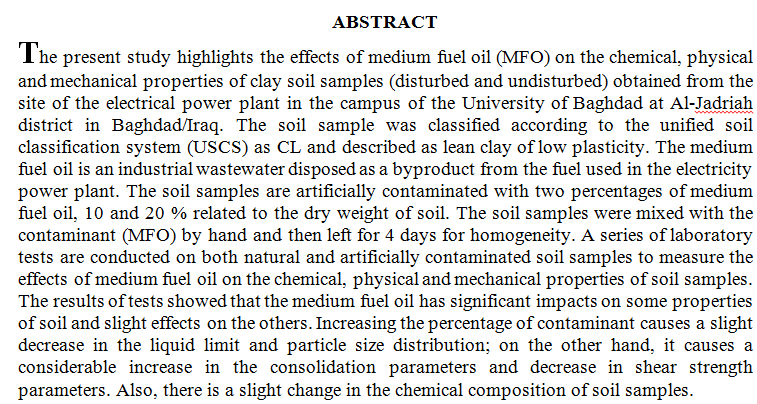
 (5)
(5)
 (7)
(7)
Background: Poly (methyl methacrylate) has several disadvantages (poor mechanical properties) like impact and transverse strength. In order to overcome these disadvantages, several methods were used to strengthen the acrylic resin by using different fibers or fillers. This study was conducted to evaluate the effect of Plasma treatment of the fiber on mechanical properties Poly (methyl methacrylate) denture base material. Materials and methods: Specimens were prepared from poly methyl metha acrylic (PMMA) divided according to present of fiber into 4 groups (first group without fiber as control group, second group with Plasma treated polyester fibers, third group with Plasma treated polyamide fibers and fourth group Plasma treated combination
... Show More (2)
(2)
 (2)
(2)
Most studies on deep beams have been made with reinforced concrete deep beams, only a few studies investigate the response of prestressed deep beams, while, to the best of our knowledge, there is not a study that investigates the response of full scale (T-section) prestressed deep beams with large web openings. An experimental and numerical study was conducted in order to investigate the shear strength of ordinary reinforced and partially prestressed full scale (T-section) deep beams that contain large web openings in order to investigate the prestressing existence effects on the deep beam responses and to better understand the effects of prestressing locations and opening depth to beam depth ratio on the deep beam performance and b
... Show More (2)
(2)
 (2)
(2)
Four new copolymers were synthesized from reaction of bis acid monomer 3-((4-carboxyphenyl) diazenyl)-5-chloro-2-hydroxybenzoic acid with five diacidhydrazide in presence of poly phosphoric acid. The resulted monomers and copolymers have been characterized by FT-IR, 1H-NMR, 13C-NMR spectroscopy as well as EIMs technique. The number averages of molecular weights of the copolymers are between 4822 and 9144, and their polydispersity indexes are between 1.02 and 2.15. All the copolymers show good thermal stability with the temperatures higher than 305.86 C when losing 10% weight under nitrogen. The cyclic voltammetry (CV) measurement and the electrochemical band gaps (Eg) of these copolymers are found below 2.00 ev.
The reserve estimation process is continuous during the life of the field due to risk and inaccuracy that are considered an endemic problem thereby must be studied. Furthermore, the truth and properly defined hydrocarbon content can be identified just only at the field depletion. As a result, reserve estimation challenge is a function of time and available data. Reserve estimation can be divided into five types: analogy, volumetric, decline curve analysis, material balance and reservoir simulation, each of them differs from another to the kind of data required. The choice of the suitable and appropriate method relies on reservoir maturity, heterogeneity in the reservoir and data acquisition required. In this research, three types of rese
... Show More (2)
(2)
This research studies the rheological properties ( plastic viscosity, yield point and apparent viscosity) of Non-Newtonian fluids under the effect of temperature using different chemical additives, such as (xanthan gum (xc-polymer), carboxyl methyl cellulose ( High and low viscosity ) ,polyacrylamide, polyvinyl alcohol, starch, Quebracho and Chrome Lignosulfonate). The samples were prepared by mixing 22.5g of bentonite with 350 ml of water and adding the additives in four different concentrations (3, 6, 9, 13) g by using Hamilton Beach mixer. The rheological properties of prepared samples were measured by using Fan viscometer model 8-speeds. All the samples were subjected to Bingham plastic model. The temperature range studi
... Show MoreGlobal warming has a serious impact on the survival of organisms. Very few studies have considered the effect of global warming as a mathematical model. The effect of global warming on the carrying capacity of prey and predators has not been studied before. In this article, an ecological model describing the relationship between prey and predator and the effect of global warming on the carrying capacity of prey was studied. Moreover, the wind speed was considered an influencing factor in the predation process after developing the function that describes it. From a biological perspective, the nonnegativity and uniform bounded of all solutions for the model are proven. The existence of equilibria for the model and its local stability is inves
... Show More (17)
(17)
 (8)
(8)
